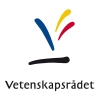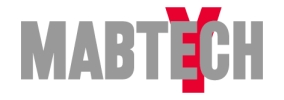Activation of Macrophages and Microglia in Neuroinflammatory Diseases
Structure of symposium
Plenary lectures – given by the speakers invited from both outside and within KI will provide a balance in international and local interests. This particular topic is not a major research focus at KI, which is why such a symposium will be of great educational benefit to KI researchers.
Current controversies – debates between the most senior invited speakers on focused questions within the field. This will encourage participation of attending scientists and be a good pedagogical example of how to structure and present scientific arguments for the junior faculty attending.
Short talks - Additional short talks will be selected from the submitted abstracts.
Poster presentations – the Nobel Forum foyer will be used for poster viewing of contributions from delegates, both during a specific poster-viewing/mingle session and for the duration of the symposium.
Symposium topic and scope

Structural dynamics of microglia in neurodegenerative disease (from Halleskog et al 2011, GLIA)
Neuroinflammatory conditions of the central nervous system (CNS) are of diverse origin ranging from injury, infection, neurodegenerative disease, CNS tumors, pain to ischemia. In neuroinflammatory diseases macrophages and microglia balance neurodestructive and neuroprotective responses through production of cytotoxic mediators versus growth- and repair-promoting mediators, which may well be associated with the state of activation of the macrophages/microglial cells. Knowledge and understanding of the multiple roles of these cells in the CNS may indicate new directions for therapeutic intervention aiming to limit the tissue damage and to promote repair mechanisms.
The symposium will bring together both preclinical and clinical researchers from a range of cutting-edge research areas to discuss both recent advances as well as future directions within the field. These will include the effects of activation of monocytes, macrophages and microglial cells during CNS inflammation and resolution, in neurodegeneration and neuroprotection, and during demyelination and remyelination, tumor invasion, chronic pain states and CNS damage. State-of-the-art review of the genes, signaling pathways, molecular mechanisms and clinical consequences of these processes will be addressed, as well as the latest imaging technologies used in their assessment. Last but not least, focus on the therapeutic consequences of intervention with an activated immune system will provide a translational character. This will include the effects of currently used therapies on activation of macrophages/microglia, as well as ideas or studies of new strategies for intervention through specific activation and adoptive transfer of these cells in neuroinflammatory diseases.




